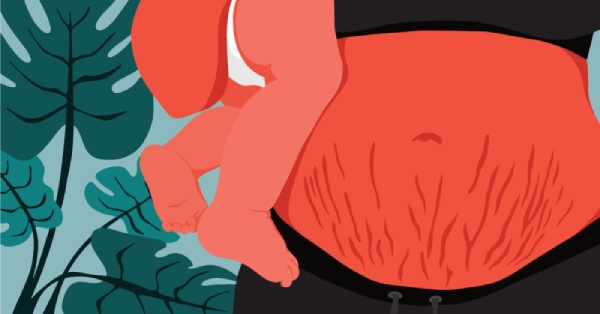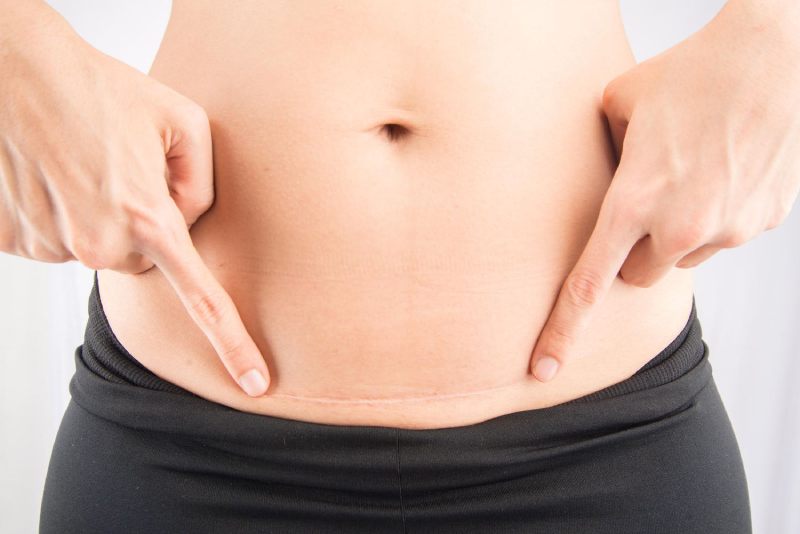Your body changes during pregnancy and continues to change after you give birth. There are numerous physical changes that you should expect after giving birth, ranging from larger breasts to postpartum Incontinence. Here are eight completely normal postpartum body changes: In this article, we will let you know more about Postpartum Body Changes
Table of Contents
1. Discharge and Bleeding
You expel a lot of fluid and blood during the delivery process, but your body doesn’t get rid of it all at once. If you gave birth vaginally, you should expect heavy bleeding and discharge for the first three days. The hospital should provide disposable underwear to keep you dry and comfortable. It would help if you only were experiencing light bleeding by the time you’re discharged, which can take up to six weeks to stop completely. Consult your doctor if you are still changing pads multiple times per hour after the first three days or if your bleeding worsens after lightening up.
2. Cramping
During pregnancy, your uterus expands to the size of a watermelon and does not just snap back into place. It will take some time to shrink and return to its original position. As your uterus shrinks, you’ll experience pains similar to contractions that last no more than five minutes at a time. If you’re breastfeeding, these cramps can last for several weeks. If your pain is constant rather than in short, contraction-like bursts, you should contact your doctor to discuss your symptoms.
3. Urinary Incontinence
During pregnancy and childbirth, your uterus isn’t the only thing that stretches. All your pelvic floor muscles, including those that control your bladder, have been stressed, which can lead to postpartum Incontinence (aka the involuntary discharge of urine). In some cases, Incontinence may begin before birth because the full-grown baby puts a lot of pressure on your bladder. This leakage usually stops six months after giving birth. If you want to strengthen your muscles in that area, consult your doctor about pelvic floor exercises with or without Kegel balls. You should also consult your doctor if your bowel movements or gas leak, as this is not normal.
4. Stitches and Tears
If you had a C-section, you would have stitches and possibly staples. Even if you gave birth vaginally, you might need stitches due to tearing or an episiotomy. The stitches will dissolve as your body heals, but you must take care of the incision site to prevent infection. Follow your doctor’s instructions for wound care and dressing changes regularly. See your doctor if you have a fever, the wound produces a foul-smelling discharge, or the pain worsens rather than improves.
5. Breast Dimensions
Your breasts will grow in size as your milk arrives two to three days after giving birth. If breastfeeding, your baby will drain the milk from your breasts regularly to relieve the engorgement. You can pump the last portion if your baby does not empty it. If you do not intend to breastfeed, the engorgement will last about five days before your body recognizes the signal and stops producing milk. In the meantime, wear a soft, supportive bra and apply cold compresses to aches and pain. Hot compresses may cause your breasts to express milk, prolonging the engorgement.
6. Hair Fall
All of that extra pregnancy estrogen lengthens your hair’s growth cycle, causing less hair to fall out. As a result, during your third trimester, your hair appears longer and thicker than ever — until you give birth and your estrogen levels plummet. Within nine to twelve months, your hair will thin back to its previous level and return to normal. While it may appear that you’re losing an unusual amount of hair, your body is getting rid of all the extra hair you’ve been holding onto for so long, so don’t be concerned about going bald.
7. Stretch Marks

Stretch marks, or deep red or purple lines in the skin, form when your skin expands too quickly at once. Pregnant women are more likely to get them on their bellies, but they can also get them on their hips, breasts, and other parts of their bodies. Over the next six to twelve months, the stretch marks will fade to silver and then a shade or two lighter than your skin. While retinol may help to fade stretch marks faster, it should not be used by pregnant or breastfeeding women.
8. Other physical changes
Other changes in your body may occur. For example, some women’s hips become permanently more comprehensive after childbirth. Some women’s feet never return to pre-pregnancy size. You may also notice that your nipples grow darker and more significant and never return to their original size. All of these changes are entirely normal and pose no cause for concern! A few women also experience a separation of the vertical abdominal muscles, a condition known as diastasis recti. This condition usually resolves itself in the weeks and months following pregnancy. If your partition is unusually wide or lasts an exceptionally long time, your doctor may recommend physical therapy to help strengthen the muscles and bring them back together.
You might be tempted to dwell on how your body has changed since birth. While many of these changes may appear strange compared to your pre-pregnancy body, they are all completely normal, and many heal on their own over time. Try not to be too solid on yourself and concentrate on what you’ve just accomplished: your body created, nurtured, and delivered a baby, which is an incredible feat!
Also read: Five Ways To Get Glowing Skin For Your Wedding
Also read: 7 Home Treatments For Healthy Hair







